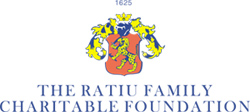UCL School of Slavonic and East European Studies, University College London, 7th Annual International Postgraduate Conference
Inclusion Exclusion
Friday 17 February 2:30 – 4:00: Panel F3: Minority Identities
Kaja Širok (Polytechnic of Nova Gorica): ‘Serbian families in Nova Gorica: ethnic, religious and social factors of preserving Serbian identity in Slovene society’
The paper deals with identity strategies of Serbian migrants and their offspring in the town of Nova Gorica (Slovenia) in context of social and political changes that took place after the dissolution of Yugoslavia and Slovenia's independence.
Nova Gorica is a relatively young town since it was founded after World War II, when the old Gorica remained under Italy, and the new Yugoslavian border area was in dire need of a capital. The largest migration boom was recorded when the extensive economy generated a need for a larger number of employees, who came from various regions of the former Yugoslavia. They became inhabitants of Nova Gorica, estblishing a multicultural community void of friction that typically occur between old-settlers and new-comers, since the town was newly founded. With the Slovenian declaration of independence in 1991, however, lots of people in the town, as well as throughout Slovenia, suddenly became "foreigners" because of their non-Slovenian ethnic origin. Torn away from their homeland, and marked as different in the newly established national state of Slovenia, the Serbian migrants were forced to reexamine their identity strategies in the new circumstances
I shall try and explain the methods of preservation of family ties between the Serbian migrants in Nova Gorica, their relation towards their homeland, the strategies of safekeeping of their ethnical identity and the passing on of traditional values to their children connected to it. These children, who are growing up in the new country, have no direct links with the culture and tradition of the country their parents and relatives call home. The paper higlights the ways in which some the new generation members, children of the Serbian migrants, try to fasten the bond to their parents' homeland by usage of the Serbian language, by trying to act and appear ''Serbian'', with certain clothing, gestures or jewelry. The paper also proposes an explanation for the existance of certain images of "being Serbian" and "to behave as a Serb" which are adopted by young Serbs in Nova Gorica. These images have to be observed in the broader context of social and cultural processes in post-socialist Slovenia. They are result of reformulation of the relationship between Serbs in Slovenes after the dissolution of the common country and are widely present in various domains in the Slovenian social life.




